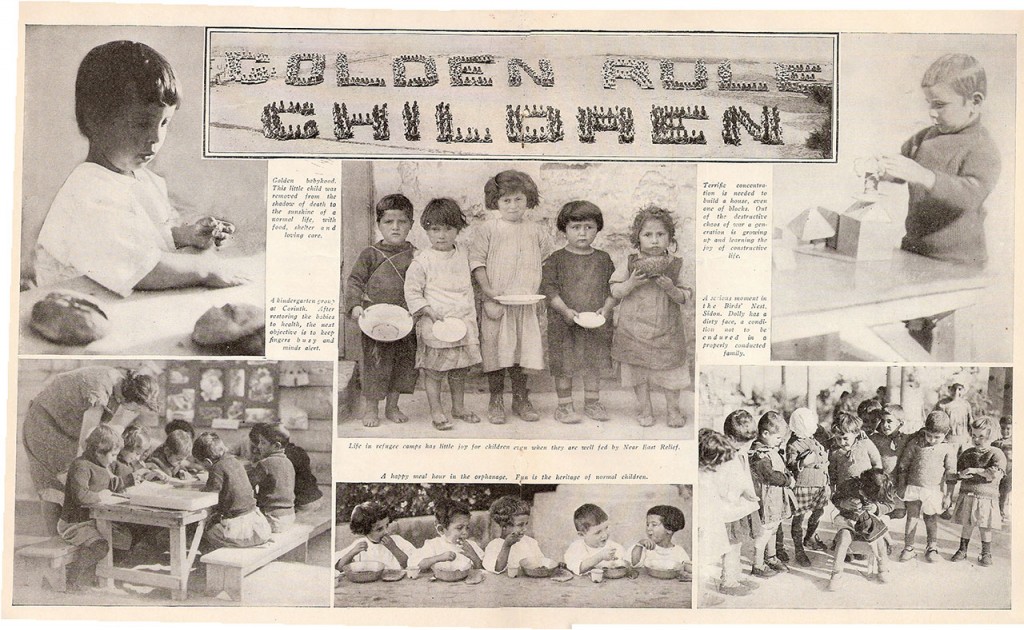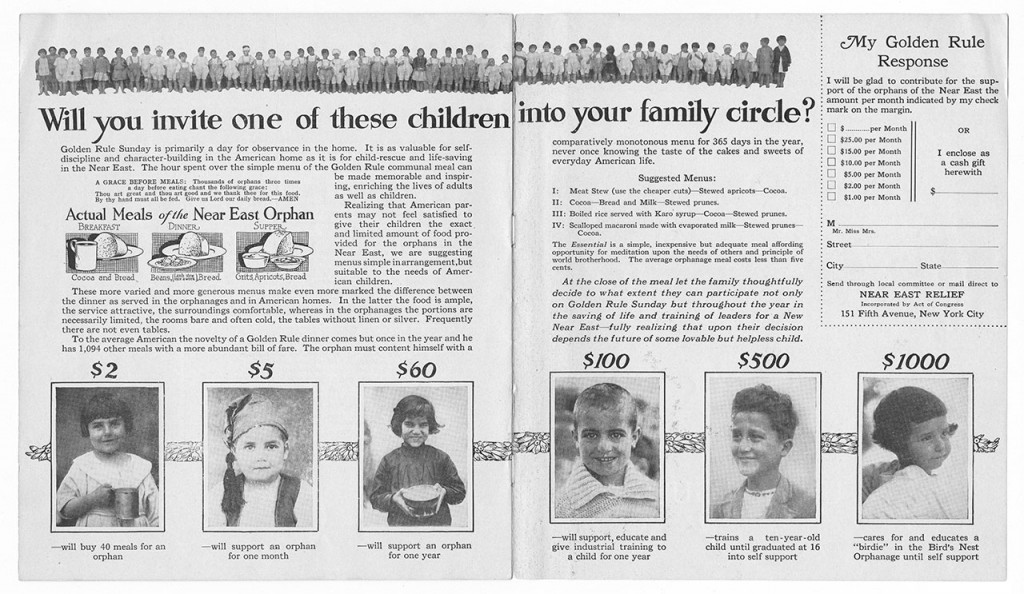Charles V. Vickrey and the Golden Rule
Charles Vernon Vickrey joined the committee that would become Near East Relief as an early member in 1915. As General Secretary, Vickrey oversaw Near East Relief’s groundbreaking promotional campaigns.
Charles V. Vickrey was also on the editorial board of The New Near East magazine. Although Vickrey traveled to the Near East several times, his true calling was on the home front. Vickrey traveled more than 7,000 miles around the U.S. per year, spreading the message of Near East Relief to thousands of Americans.
Vickrey launched one of Near East Relief’s most famous promotional campaigns in 1923. In six short weeks, Vickrey organized the first ever Golden Rule Sunday on December 2. Families would eat a meal similar to those served in Near East Relief orphanages and donate the money that they would have spent on a traditional Sunday dinner to the relief effort.The New York Times reported that former President Wilson, a longtime Near East Relief supporter, had promised to dine on beans and corn grits in observance of Golden Rule Sunday. Several members of Congress signed Golden Rule pledge cards. President Coolidge announced that the Coolidge family and the presidential cabinet would participate.

It is with a good deal of satisfaction that I commend your propose to observe an International Golden Rule Dinner Sunday, on the second of December, 1923 . . . It suggests not only a practical method for help, but the highest expression of sympathy, by sharing for a time the privations of others.


More than one million Americans partook of a simple four-cent meal on the first Golden Rule Sunday. Even John D. Rockefeller, Jr. ate an orphanage-style meal. Working tirelessly at the Near East Relief office in New York City, Vickrey (right) received telegrams informing him of similar dinners in far-off countries like Australia, Switzerland, and China.
The campaign was so successful that Near East Relief decided it should be an annual event. Fifteen hundred prominent New Yorkers attended Near East Relief’s first official Golden Rule Dinner at the Hotel Roosevelt in Manhattan on September 25, 1924.
The guests dined on macaroni, cheese, apricots with corn syrup, bread, and cocoa. They used tin plates and cups that orphanage children had made from empty condensed milk cans. The dinner was the first of 500 similar events held throughout the U.S that year, culminating in the observance of Golden Rule Sunday in private homes on December 7. President Coolidge attended the Golden Rule Dinner in Washington, D.C., and issued official statements endorsing Golden Rule Sunday and Near East Relief’s work.

Even Hollywood adopted the cause. Famous silent film stars like Betty Blythe, Marguerite De La Motte, and John Bowers attended a Golden Rule Sunday dinner at Universal Studios. Rev. Neal Dodd, an Episcopal priest-turned-actor known as “the Chaplain of the Movies,” read a special message from Near East Relief orphans while the stars ate an orphanage-style meal.
Near East Relief published Vickrey’s Golden Rule Sunday: A Handbook in 1926. The book contained everything needed to organize a Golden Rule event in one’s own town, including instructions for recruiting prominent businessmen and clubwomen to serve on a leadership committee. The book also featured photographs of successful Golden Rule events, poems and readings, and even sheet music for an original Golden Rule hymn.
By the time the handbook was published, more than 50 foreign countries had joined the United States in observing Golden Rule Sunday. Even the children in Near East Relief orphanages participated. The orphans ate even simpler meals of rice and raisins and donated their usual food to children in nearby refugee communities. Vickrey had created an immensely popular new form of philanthropy.
Charles V. Vickrey left Near East Relief in 1929 to launch the newly-chartered Golden Rule Foundation, which raised funds to help poor children all over the world. Vickrey died at age 90 in 1966.

